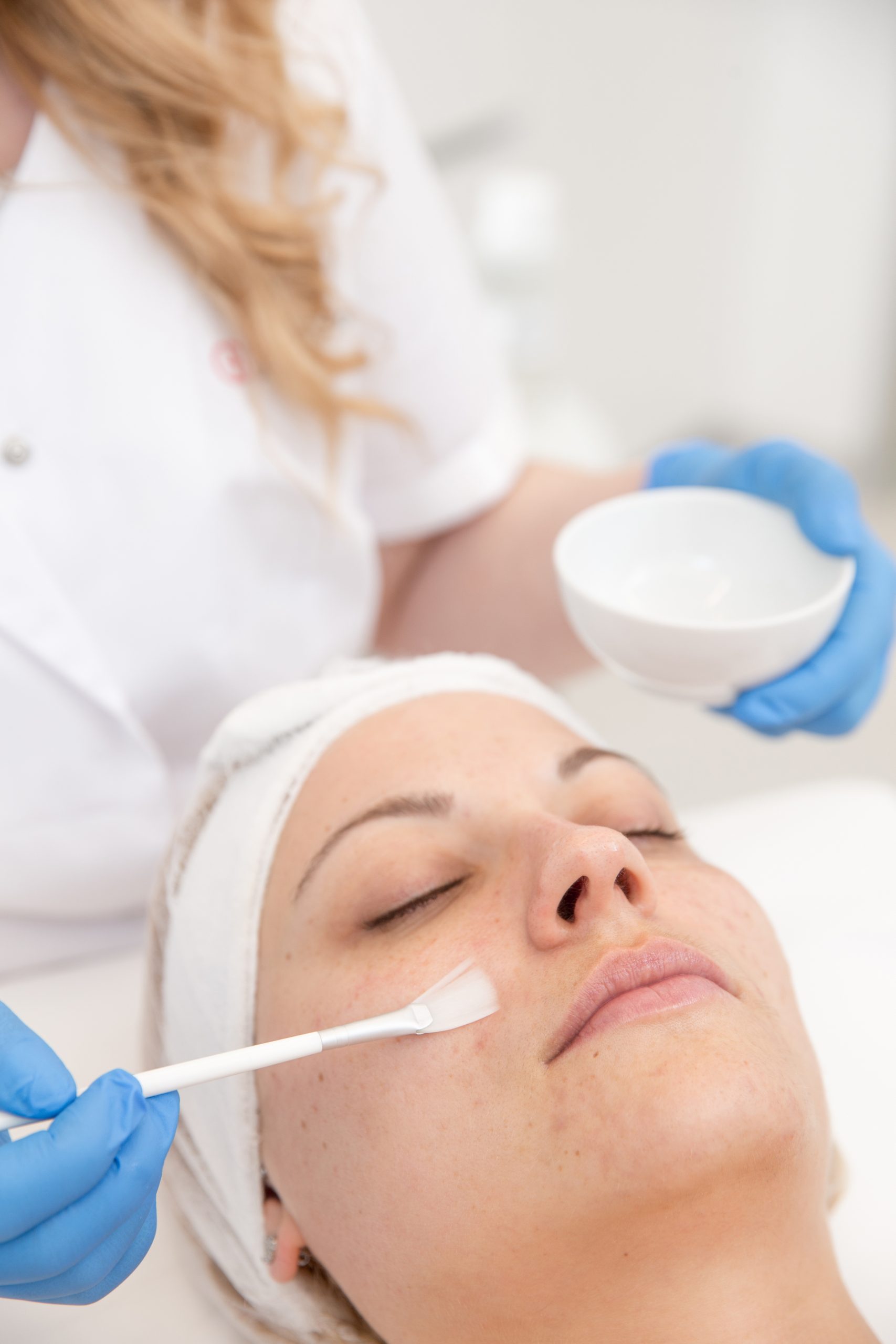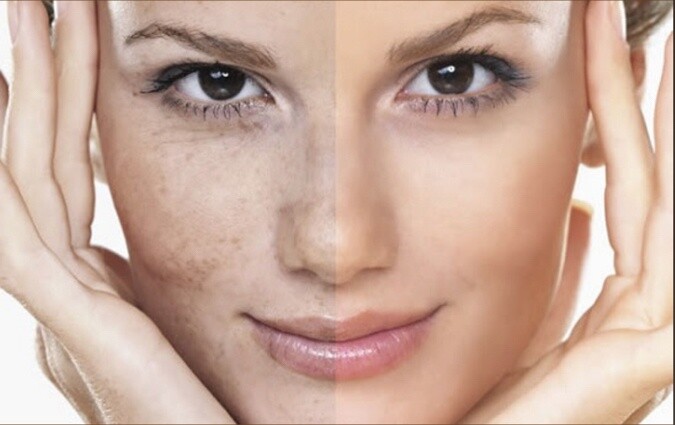Chemical Peels
What is a Chemical Peel?
A chemical peel is a skin treatment that involves the application of a chemical solution to the top layers of the skin to cause a careful exfoliation. There are multiple types of chemical peels depending on the formulation of the chemical solution that it contains. Peels are categorized by the strength of its solution, how deeply it penetrates the skin and what conditions it can treat.
How do Chemical Peels Work?
Chemical peels cause exfoliation of dead surface skin cells which leads to new skin growth by stimulating the production of collagen. It can also improve skin elasticity for a more youthful form and shape.
What can a Chemical Peel accomplish?
- Improves skin texture and radiance
- Helps reduce skin laxity
- Decreases fine lines and wrinkles especially under eyes and around the mouth
- Evens-out skin tone by reducing skin discoloration and dark spots
- Lightens Melasma
- Treats and prevents acne (initially can cause transient acne breakout)
- Unblocks pores and reduces oily skinSoftens skin
When should Chemical Peels not be used:
- Peels should not be used in pregnant or breast-feeding women
- Should be avoided if one has an active cold sore, rash, open wound in the treatment area
- Should not be applied to sunburned skin
- Not recommended for those with excessively sensitive skin, including eczema, inflammatory rosacea in the area to be treatedIf you are allergic to Aspirin or any of the peel components
- If on Accutane within the past 12 months
- If on Retinol containing products in the last 6 weeks
- If you have been treated with radiotherapy or chemotherapy in the past 12 months
- If you have had waxing, electrolysis, hair removal creams or laser hair removal in the treatment area in the past week


What does the Micropeel accomplish?
- Treats and prevents acne breakouts
- Decreases fine lines and wrinkles
- May eliminate the feeling of dry skin
- Refines the appearance of pore sizes
- Decreases blackheads
- Reduces oil production
- Improves skin texture
- Minimal Downtime
What does the Pigment Balancing Peel accomplish?
- Excellent for Melasma
- Reduces Acne-related discoloration
- Fades dark spots and evens-out skin tone
- Improves skin radiance
- Minimal Downtime
Which Peel is right for me?
Dr. Ellyn Levine at Trilogy Health will meet with you for a complimentary skin consultation and will make a suggestion on what peel may be best for the condition being treated or outcome desired. Dr. Levine uses the SkinCeutical line of Chemical Peels since they can be customized to accommodate all skin types, are affordable and offer excellent results with minimal downtime.
SkinCeutical Chemical peels recommended by Dr. Levine:
1. MicroPeel peel containing Salicylic Acid
2. Pigment Balancing Peel containing Glycolic Acid, Lactic Acid, Kojic Acid, Vitamin C
3. Advanced Corrective Peel containing Salicylic Acid, Lactic Acid, Phenol
What does the Advanced Corrective Peel accomplish?
- Decreases fine lines and wrinkles
- Fades dark spots and evens-out skin tone
- Softens skin
- Refines the appearance of pore sizes
- Treats and Prevents Acne
- Excellent for Melasma
- Exfoliates and hydrates skin
How many treatments are recommended?
- Patients should return every 2 weeks for a peel during the corrective stage of their program.
- Sensitive skin patients and darker skin patients should return every 4 weeks to reduce risk of temporary hyperpigmentation.
- 4-6 clinical procedures are required to obtain desired and realistic results.
- Once desired results are achieved, clinical maintenance is recommended every 1-2 months with acid-free clinical procedures or treatments.
- To obtain optimal results, a patient must be on an integrated skincare program that includes a customized homecare program, clinical procedures, and professional treatments.
What is The Peel Procedure?
During the peel your skin will be throughly cleansed and the chemical peel will be applied to your skin using a gentle gauze. The peel will be left on the skin for between two and five minutes, during which time some patients may experience a mild tingling or a mild burning sensation. Depending on the peel, a hydrating mask, Vitamin C serum, sunscreen may be applied to the skin after your treatment.
What is my Chemical Peel Aftercare Instructions?
- After your peel you may notice that the skin is more red than usual for two hours afterwards, you may also notice that the skin feels tight or dry and or you may experience some very mild flaky skin for a few days. Rarely you may experience crusting of the skin, swelling or a reactivation of cold sores.
- Avoid sun exposure and tanning beds to treated areas after treatment. Daily sunscreen with an SPF of at least 30 is vital to maintain your improved skin. This is essential to prevent uneven skin tone and excess pigmentation.
- Avoid any irritants to your skin, such as Alpha Hydroxy Acids or Beta Hydroxy Acids, benzoyl peroxide, glycolic/salicylic acids, astringents or Vitamin C for one week after your treatment.
- Avoid makeup if possible until the following morning.
- Please avoid strenuous activity, swimming or jacuzzi use for 24 hours.
- When washing your face do not scrub, use a gentle cleanser for sensitive skin.
- Apply a light moisturizer as often as needed to relieve dryness and tightness
- Approximately 48 hours after treatment, your skin may start to peel. This peeling will generally last 2 to 3 days. DO NOT PICK OR PULL THE SKIN.
- For those who receive the Advanced Corrective Peel, contact with water on all treated areas must be avoided for 2 hours after the peel.
- Consider the purchase of SkinCeuticals Skin Brightening kit that contains essential skin products such as Vitamin C serum, Retinol to improve skin tone and stimulate collagen production such as Vitamin C serum.
